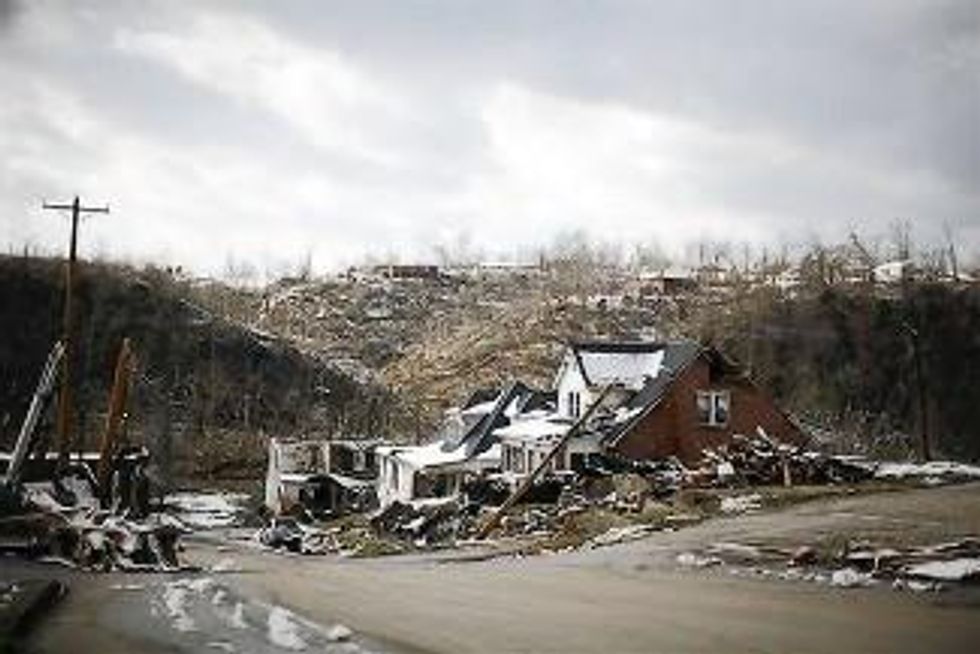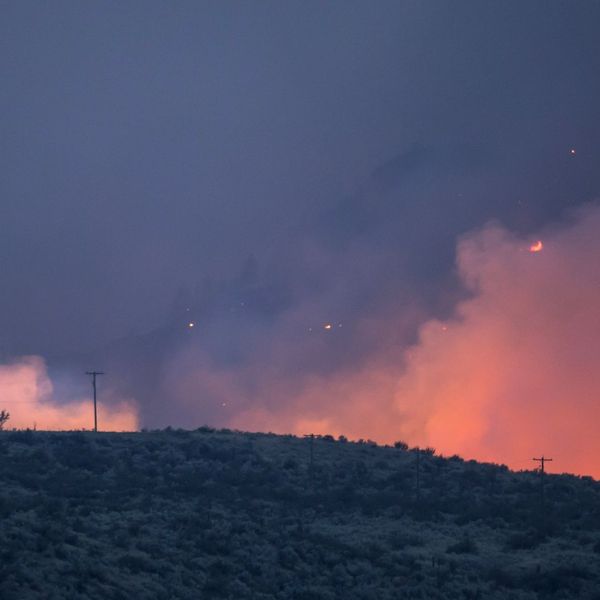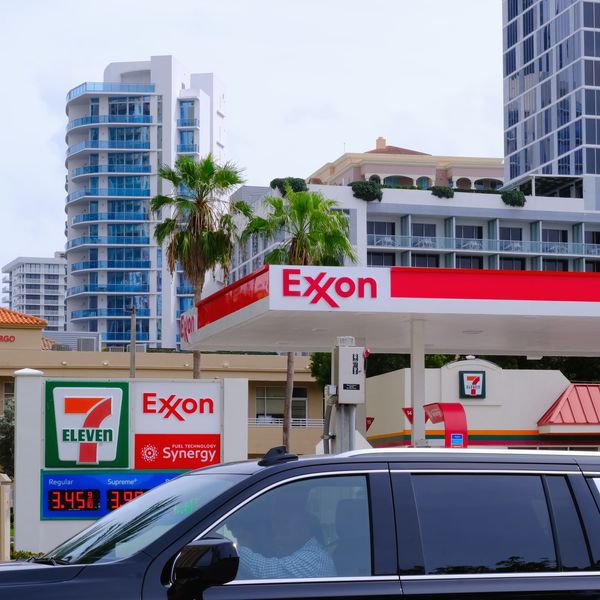Insurers to 'Get Out of Storms' Way' After Tornado Disasters
Dropping coverage in wake of extreme weather
Following an abrupt start to this year's tornado season, insurers have begun reconsidering tornado coverage in storm-prone states.
Over 150 tornadoes touched down between Feb 28 and March 3. Friday's thunderstorms generated more tornadoes in one day than the usual monthly average in all of March. 39 people died over a stretch of more than 1,000 miles according to Reuters.
Given the increase in extreme weather, property insurers are taking unprecedented losses in profits. The solution for many in the business is becoming clear: leave homeowners out in the open with no financial protection from natural disasters.

Reuters reports:
Unfortunately, homeowners may find themselves either paying substantially higher rates or not having insurance at all, as insurers try to manage their exposure to what is clearly a growing concern by diversifying geographically and tightening their standards. [...]
Disaster modeler Eqecat said the total number of tornadoes recorded this year to date is more than twice the seven-year average. It was Eqecat that estimated industry losses from last week's storms at $1 billion to $2 billion.
"While it's not to the same scale as what a major hurricane could do to a Florida or the Eastern coastal states, I think the risk of severe thunderstorms is growing and awareness is growing," said Brad Lemons, vice president of product and pricing at Nationwide Mutual, the eighth-largest property insurer in the country. [...]
Homeowners in hard-hit states are already paying the cost this year. For example, State Farm, the country's largest home and auto insurer, received approval from regulators for a 5 percent hike in owner-occupied homeowners insurance rates in Alabama as of last November. In Mississippi, it sought a 15.8 percent rate hike for its manufactured housing coverage. [...]
The Consumer Federation of America, in a February study written by a former Texas insurance commissioner, claimed homeowners were paying 10 times more out of pocket for damage after Katrina than after Hurricane Andrew in 1992, and rates have rose further since that time. [...]
The phrase "perfect storm" is overused, but in last Friday's case, it might well be true.
"Nearly every factor meteorologists look for when forecasting severe thunderstorms and tornadoes was in place," AccuWeather said in a report Monday.
Given how frequent twisters have become in the last year or so, one solution for the industry is to simply get out of the storms' way.
# # #
An Urgent Message From Our Co-Founder
Dear Common Dreams reader, The U.S. is on a fast track to authoritarianism like nothing I've ever seen. Meanwhile, corporate news outlets are utterly capitulating to Trump, twisting their coverage to avoid drawing his ire while lining up to stuff cash in his pockets. That's why I believe that Common Dreams is doing the best and most consequential reporting that we've ever done. Our small but mighty team is a progressive reporting powerhouse, covering the news every day that the corporate media never will. Our mission has always been simple: To inform. To inspire. And to ignite change for the common good. Now here's the key piece that I want all our readers to understand: None of this would be possible without your financial support. That's not just some fundraising cliche. It's the absolute and literal truth. We don't accept corporate advertising and never will. We don't have a paywall because we don't think people should be blocked from critical news based on their ability to pay. Everything we do is funded by the donations of readers like you. Will you donate now to help power the nonprofit, independent reporting of Common Dreams? Thank you for being a vital member of our community. Together, we can keep independent journalism alive when it’s needed most. - Craig Brown, Co-founder |
Following an abrupt start to this year's tornado season, insurers have begun reconsidering tornado coverage in storm-prone states.
Over 150 tornadoes touched down between Feb 28 and March 3. Friday's thunderstorms generated more tornadoes in one day than the usual monthly average in all of March. 39 people died over a stretch of more than 1,000 miles according to Reuters.
Given the increase in extreme weather, property insurers are taking unprecedented losses in profits. The solution for many in the business is becoming clear: leave homeowners out in the open with no financial protection from natural disasters.

Reuters reports:
Unfortunately, homeowners may find themselves either paying substantially higher rates or not having insurance at all, as insurers try to manage their exposure to what is clearly a growing concern by diversifying geographically and tightening their standards. [...]
Disaster modeler Eqecat said the total number of tornadoes recorded this year to date is more than twice the seven-year average. It was Eqecat that estimated industry losses from last week's storms at $1 billion to $2 billion.
"While it's not to the same scale as what a major hurricane could do to a Florida or the Eastern coastal states, I think the risk of severe thunderstorms is growing and awareness is growing," said Brad Lemons, vice president of product and pricing at Nationwide Mutual, the eighth-largest property insurer in the country. [...]
Homeowners in hard-hit states are already paying the cost this year. For example, State Farm, the country's largest home and auto insurer, received approval from regulators for a 5 percent hike in owner-occupied homeowners insurance rates in Alabama as of last November. In Mississippi, it sought a 15.8 percent rate hike for its manufactured housing coverage. [...]
The Consumer Federation of America, in a February study written by a former Texas insurance commissioner, claimed homeowners were paying 10 times more out of pocket for damage after Katrina than after Hurricane Andrew in 1992, and rates have rose further since that time. [...]
The phrase "perfect storm" is overused, but in last Friday's case, it might well be true.
"Nearly every factor meteorologists look for when forecasting severe thunderstorms and tornadoes was in place," AccuWeather said in a report Monday.
Given how frequent twisters have become in the last year or so, one solution for the industry is to simply get out of the storms' way.
# # #
Following an abrupt start to this year's tornado season, insurers have begun reconsidering tornado coverage in storm-prone states.
Over 150 tornadoes touched down between Feb 28 and March 3. Friday's thunderstorms generated more tornadoes in one day than the usual monthly average in all of March. 39 people died over a stretch of more than 1,000 miles according to Reuters.
Given the increase in extreme weather, property insurers are taking unprecedented losses in profits. The solution for many in the business is becoming clear: leave homeowners out in the open with no financial protection from natural disasters.

Reuters reports:
Unfortunately, homeowners may find themselves either paying substantially higher rates or not having insurance at all, as insurers try to manage their exposure to what is clearly a growing concern by diversifying geographically and tightening their standards. [...]
Disaster modeler Eqecat said the total number of tornadoes recorded this year to date is more than twice the seven-year average. It was Eqecat that estimated industry losses from last week's storms at $1 billion to $2 billion.
"While it's not to the same scale as what a major hurricane could do to a Florida or the Eastern coastal states, I think the risk of severe thunderstorms is growing and awareness is growing," said Brad Lemons, vice president of product and pricing at Nationwide Mutual, the eighth-largest property insurer in the country. [...]
Homeowners in hard-hit states are already paying the cost this year. For example, State Farm, the country's largest home and auto insurer, received approval from regulators for a 5 percent hike in owner-occupied homeowners insurance rates in Alabama as of last November. In Mississippi, it sought a 15.8 percent rate hike for its manufactured housing coverage. [...]
The Consumer Federation of America, in a February study written by a former Texas insurance commissioner, claimed homeowners were paying 10 times more out of pocket for damage after Katrina than after Hurricane Andrew in 1992, and rates have rose further since that time. [...]
The phrase "perfect storm" is overused, but in last Friday's case, it might well be true.
"Nearly every factor meteorologists look for when forecasting severe thunderstorms and tornadoes was in place," AccuWeather said in a report Monday.
Given how frequent twisters have become in the last year or so, one solution for the industry is to simply get out of the storms' way.
# # #

